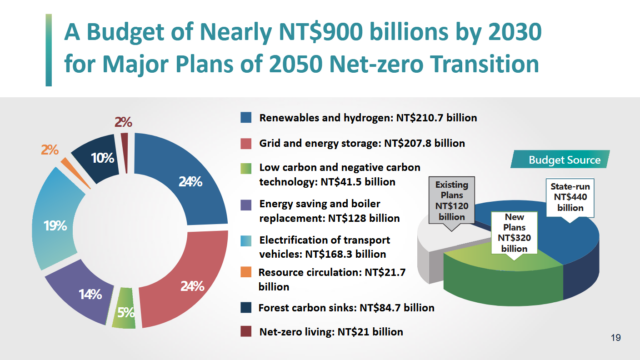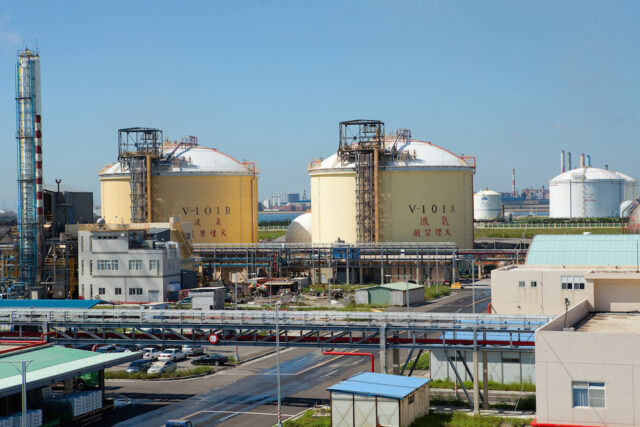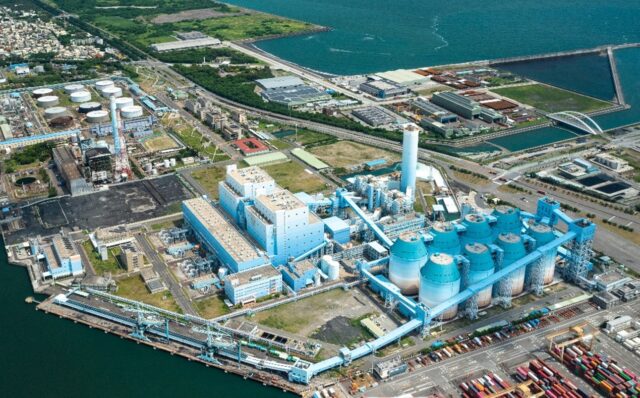Ammonia takes key role in Taiwan’s energy transition strategy
By Geofrey Njovu on August 30, 2024
Net-zero emissions by 2050

Click to enlarge. Hydrogen and ammonia are set to play a central role in Taiwan’s energy transition plans. Source: Taiwan National Development Council.
In March 2022, the Government of Taiwan announced its plans to become carbon neutral by 2050. The published roadmap, Taiwan’s Pathway to Net-Zero Emissions in 2050, featured Energy Transition as one of four key pillars. As part of the energy transition plan, the country placed a budget of NT$210.7 billion (equivalent to about USD$6.5 billion) by 2030 towards renewables and hydrogen.
Key plans, as can be seen to the right, include decarbonising thermal power through incorporating CCS-based hydrogen and gas-fired power plants, phasing out of coal through ammonia co-firing, and adopting the use of hydrogen, ammonia and biomass fuel in the transportation industry.
In this piece, we highlight a few initiatives that are currently underway in keeping with the roadmap.
Value chain, logistics and infrastructure developments by the Taiwan Fertilizer Company
Mitsubishi Heavy Industries (MHI) and Taiwan Fertilizer Company (TFC) have reached an agreement to explore establishing an ammonia value chain in Taiwan.

Click to learn more. Two ammonia storage tanks at the Taiwan Fertilizer Company’s Taichung plant. Source: TFC.
As part of the agreement, the two parties intend to determine the feasibility of receiving, storage, handling and transportation of ammonia to key use points in Taiwan, such as power generation plants. The project is seen as crucial groundwork in keeping with the March 2022 roadmap, a substantial part of which is a switch to less carbon intensive fuels.
The study will explore the use of both CCS-based and renewable ammonia in Taiwan. The country has continued to make strides towards this direction, having imported its first low-carbon ammonia in June 2023. An MHI ‘Ammonia Energy Division’ was also set up in the country in January this year.
TFC has also signed a similar MoU with IHI Corporation. Together, they will explore the establishment of a low-carbon ammonia value chain between Taiwan, Japan and other East Asian countries.
As part of the MoU, IHI will supply both CCS-based and renewable ammonia to Taiwan from its production bases globally. As a first step, starting with TFC’s ammonia receiving terminal, the two companies will seek to optimise logistics. They also intend to promote the adoption of clean ammonia in Taiwan’s industrial sector.
Import logistics were also the focus of a separate announcement in January last year. Anticipating increased ammonia imports to the island nation, Stolthaven Terminals and Revivegen launched a joint venture to build a greenfield terminal in Kaohsiung Port, Taiwan, including bulk liquid import and storage capacity for ammonia.
Taipower, Sumitomo and IHI – ammonia coal co-firing demonstration

Click to learn more. The Dalin coal-fired power plant, where a 5% ammonia co-firing demonstration will be achieved by 2030. Source: Taipower.
In February this year, a three-party agreement was signed between Taipower, IHI Corporation and Sumitomo Corporation. Officially dubbed the “Dalin Power Plant Ammonia–Coal Co-firing Technology Cooperative Memorandum of Understanding”, the agreement will see the partners collaborate to demonstrate 5% ammonia co-firing power generation at Taipower’s Dalin Power Plant by 2030.
To reduce the carbon intensity of its thermal power plants, Taipower has collaborations in place with other partners including Siemens and Mitsubishi to promote power generation demonstrations, among them hydrogen blending in gas-fired plants and ammonia-coal co-firing.
Ammonia-fueled ship development
In March this year, ITOCHU Corporation and Taiwan-based U-Ming Marine Transport signed an MoU focussing on the joint ownership and operation of ammonia-fueled ships.
This is follow-on work from the ITOCHU-led “Integrated Project”, which was funded by the Japanese Government as part of its Green Innovation Fund. The project, in which ITOCHU partnered with Mitsui, Nihon Shipyard, K-LINE and NS United, sought to build ammonia-fueled ships and the development of ammonia fuel supply chains, both in Japan and Singapore.
As part of the collaboration, the two parties plan to establish an ammonia fuel supply chain in Taiwan. The collaboration will also feature discussions on maritime industry decarbonisation, including the use of alternative fuels such as methanol and other energy saving devices.